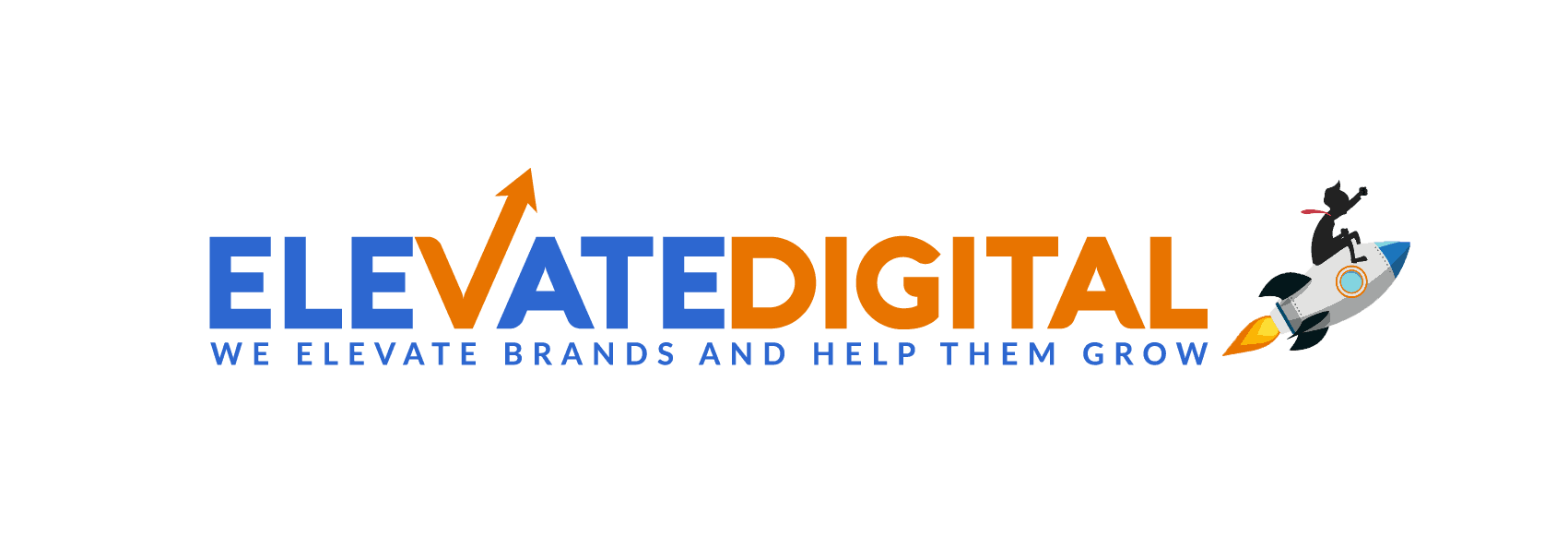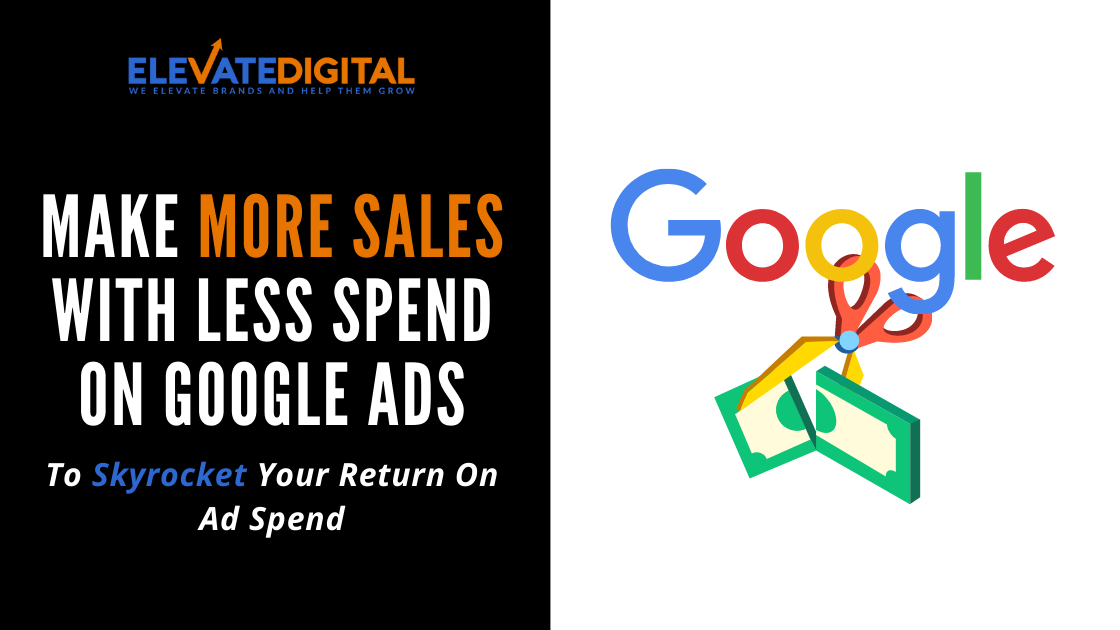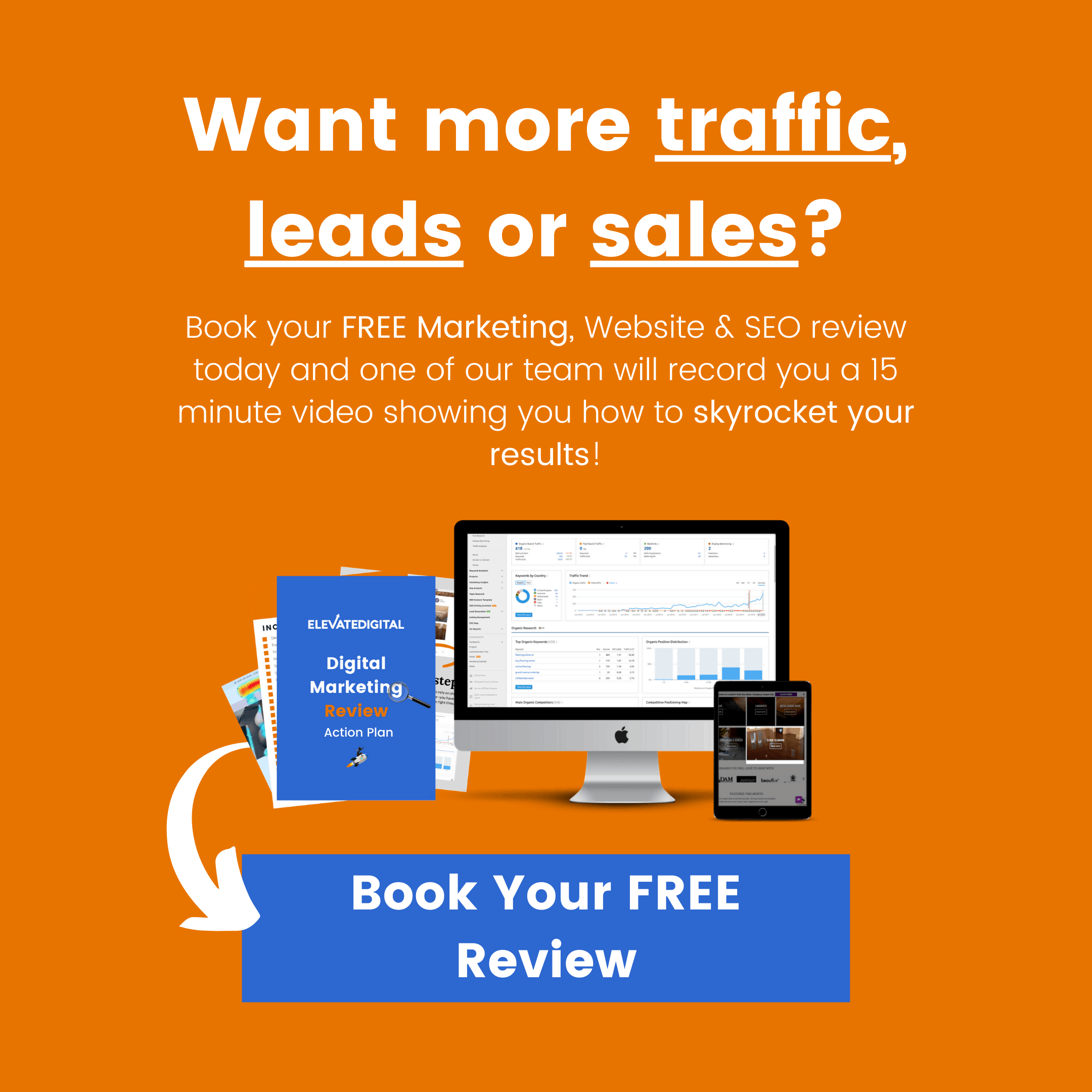If you’re running a Google Ads campaign, your average cost per conversion is one of the most important figures you can optimise for.
Especially if you want to be left with more profit after acquiring new customers and not looking at your bank balance like…
In a nutshell, getting a better cost-per-conversion comes down to turning more of those “clicks” you’re paying for into leads and sales.
That can be easier said than done though…
So here are 5 proven, yet heavily underutilised tips to help you out:
1. Optimise your Website or Landing Pages
Optimising your landing page is crucial to decreasing your cost per conversion.
By having a highly optimised landing page, you make sure that a higher percentage of those visitors turn into paying customers.
Most of the best landing pages have simple, easy-to-use designs planned out well before creation. They use attention-grabbing, contrasting colours without being too aggressive or eye-sore. The essential elements should stay above the fold and include your necessary contact information. All call-to-action buttons and links should be clear and straightforward.
Not having a well optimised landing page is a bit like pouring water into a leaky bucket…
You spend all that money getting clicks and visitors only for them to fall out the other side, due to a slow-loading page, poor user experience or vague and confusing messaging.
There’s a reason, all of the fastest-growing companies out there like Netflix continuously test elements on their website like their call-to-action buttons.
Pssstt…prefer video? Check out our video walkthrough on reducing your CPC here:
There’s a reason, all of the fastest-growing companies out there like Netflix continuously test elements on their signup pages like their call-to-action buttons.

Because they know every optimisation leads to cheaper cost-per-conversions. This process of testing and experimentation is known as conversion rate optimisation.
You may not have noticed it, but they even do the same thing with video thumbnails to get people to watch more content on the platform.
That’s why you should also run occasional A/B tests to determine which page/ad combination is bringing you the best results and look to continuously improve!
Just make sure you’re doing this in a tactical and measured approach, testing one element at a time. Otherwise it becomes extremely difficult to know which change has lead to an increase or decrease in leads/sales.
Want a FREE audit to help lower your CPC and increase sales?
Book your FREE digital review today and we’ll record you a 10 minute video looking at your current website/landing page and suggest some ways you could generate more leads with the same, if not LESS spend on ads!
2. Understand Keywords and Search Intent BEFORE Running your Ads
By researching and understanding the intent behind specific keywords, you can begin to attract more serious buyers (not to mention, also boost your SEO rankings in the process).
Before running any PPC campaign, it’s important to get into the user’s mind and understand what they want to see from these search results.
You can then use that information to prioritise certain keywords over others.
Ask yourself what keywords will yield the most potential customers for your business, and focus on targeting those. Using irrelevant keywords just means that you’re wasting money on the wrong audience.
Keywords can also be a good indicator of where somebody is in the buyer journey and how likely they are to make a purchasing decision in that single interaction
For example if I’m searching for “used cars” chances are I’m probably in the research phase and likely won’t be buying anything just yet.
Although you would have still paid for the click!
On the other hand, If I search for “Used Honda Civic Type R near me” that would tend to indicate, I know exactly what I want and I’m looking to make a purchase.
Obviously there are nuances to this, and there are ways to at least capture those leads or “browsers” (even if they’re not ready to buy just yet) but that’s one for another article 😉
The main takeaway here though is to be mindful of your keywords, as taking too broad of an approach will significantly spike your cost per conversion.
3. Ensure Congruency Between your Ad Copy and Landing Page
Ad campaigns and banners that conflict with what a user sees when they land on your company’s web page will confuse, frustrate, and likely turn them away.
Keeping your ads thematically congruent to the message you’re trying to portray through your website and the things you are trying to sell can be the make-or-break moment for your business.
For example, let’s say I’m search for an accountant for my e-commerce store:
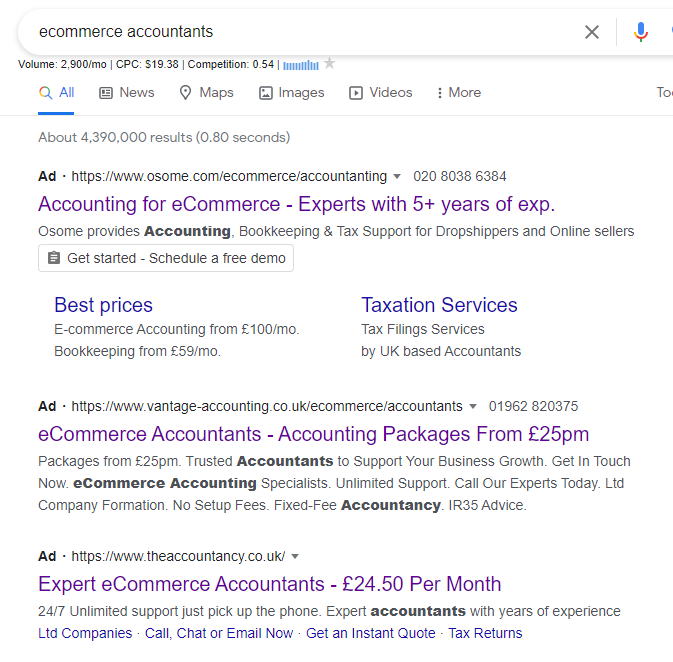
All looks good so far right?
They all specifically state e-commerce which gives me a lot of confidence.
However, the first ad I click on, I see this:

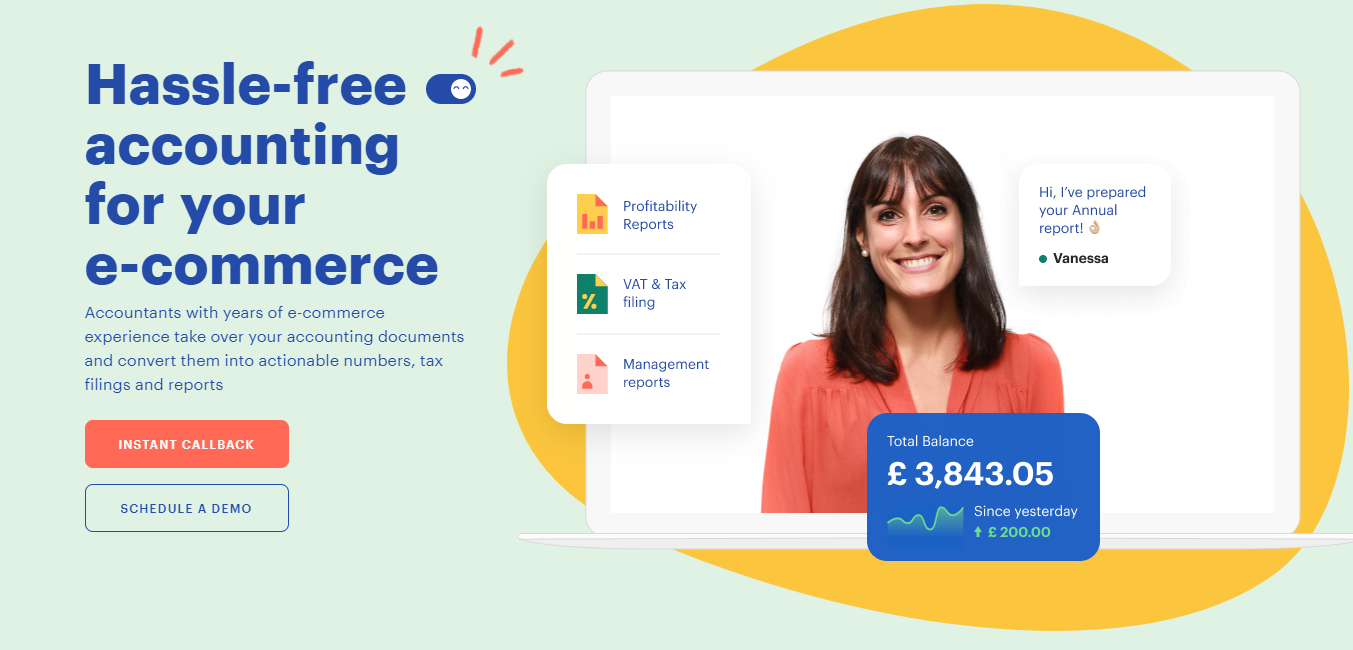
It’s safe to say the latter website is far more likely to win my trust and confidence here because of the specificity and relevance on the page. This in turn helps me to feel understood as a business and in safer hands.
If like the first listing, you’re in a business where you serve multiple market segments. We would highly suggest creating individual ad campaigns and customised, specific landing pages for your most profitable segments.
We’ve tested this multiple times and seen this significantly increase conversions, leading to higher returns and a lower cost-per-conversion.
4. Aim for a Higher Quality Score so Google Rewards you with Lower CPC
Quality score is a highly overlooked aspect of a profitable marketing campaign…
Your Google Ads Quality Score is made up of a number of factors like how accurate your ad content is to your webpage and business or how fast your website loads.
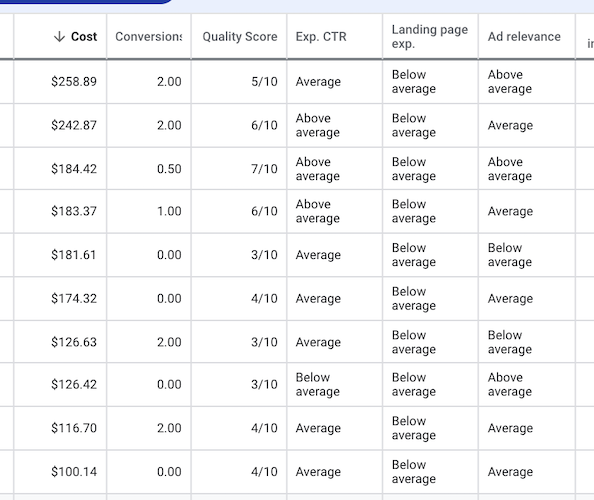
Whilst the cost-per-click of your PPC ads typically work on an auction and bidding system, Google will often reward a lower cost-per-click to ads with a higher quality score, which in turn, results in a lower cost-per-conversion for you the advertiser!
Here’s an article from the team at Wordstream that explains quality score in more detail and what you can do to improve it.
5. Monitor Your Keywords and Add Negative Keywords When Needed.
If your ads are displayed when people look up irrelevant or unwanted search terms, it’ll cost you money that you don’t need to spend.
Using phrase match and broad match keywords, you can often find some highly profitable search terms. The downside to this is they can also match to search terms which simple aren’t relevant to your business or just don’t indicate a potential buyer.
By closely monitoring the keywords getting clicks over time, you can better understand where your time and money are being used effectively and where your efforts are being wasted.
From there, you can use negative keywords to narrow down the searches your ads are shown in. This way, you can eliminate the search terms/keywords that aren’t as likely to garner new customers as others.
Start improving your cost-per-conversion today and skyrocket your returns 🚀
Book your FREE digital review today and we’ll record you a 10 minute video looking at your current website/landing page and suggest some ways you could generate more leads with the same, if not LESS spend on ads!
- Highly-Effective DTC Marketing Strategies & Examples - February 28, 2024
- How To Set Paid Media Marketing Budget - October 16, 2023
- The Ultimate Guide To A/B Testing - September 23, 2023
